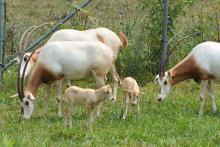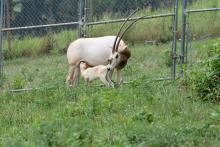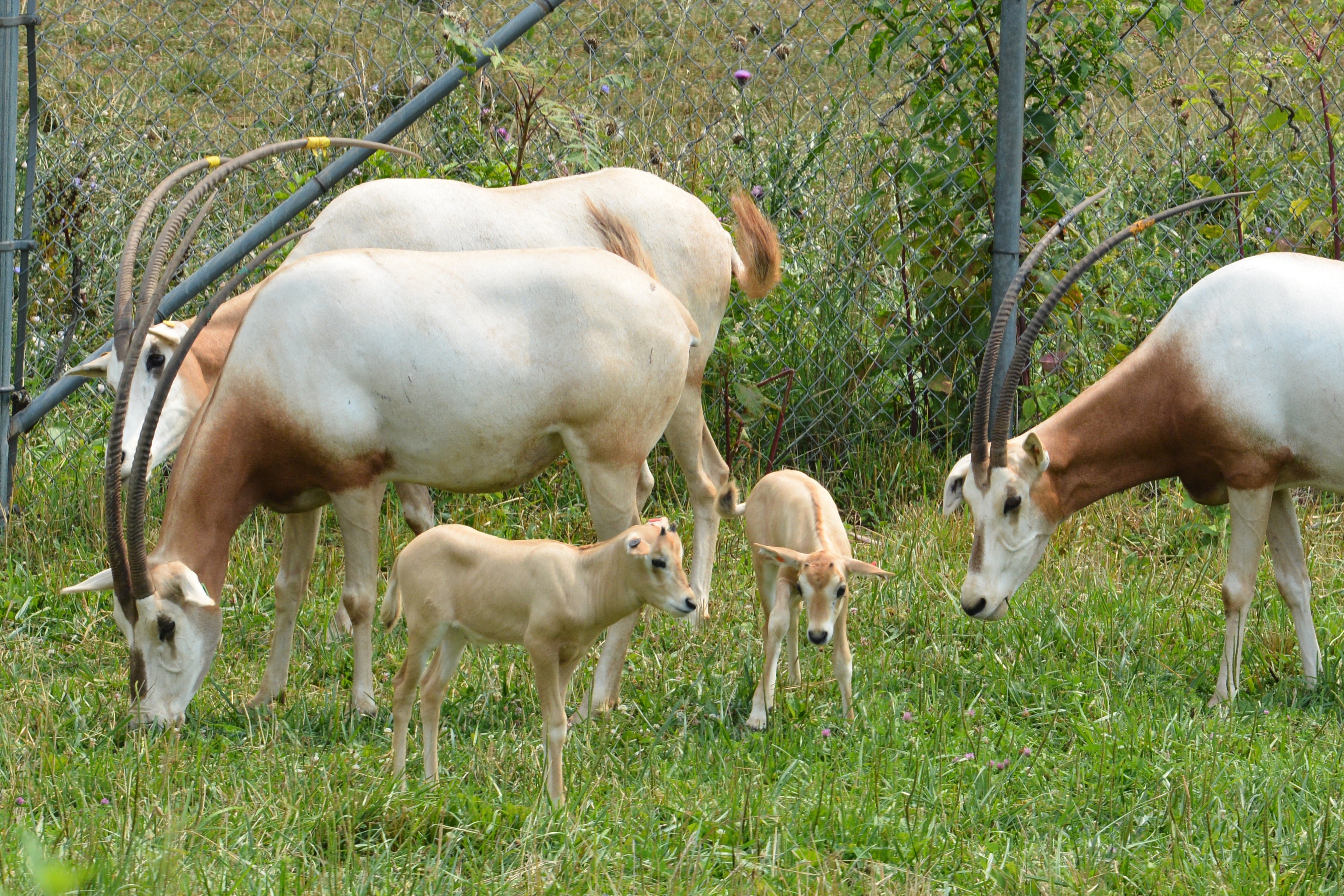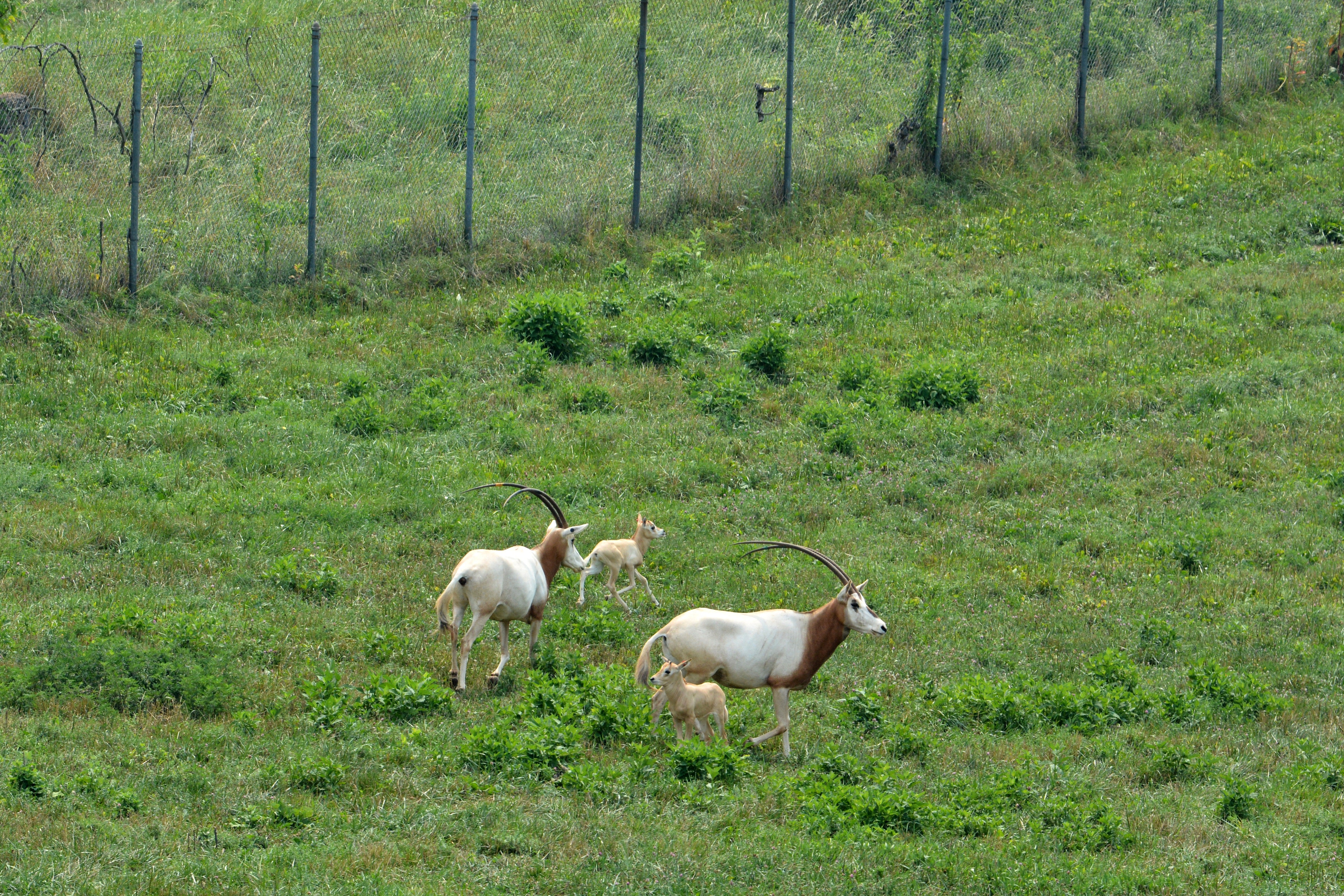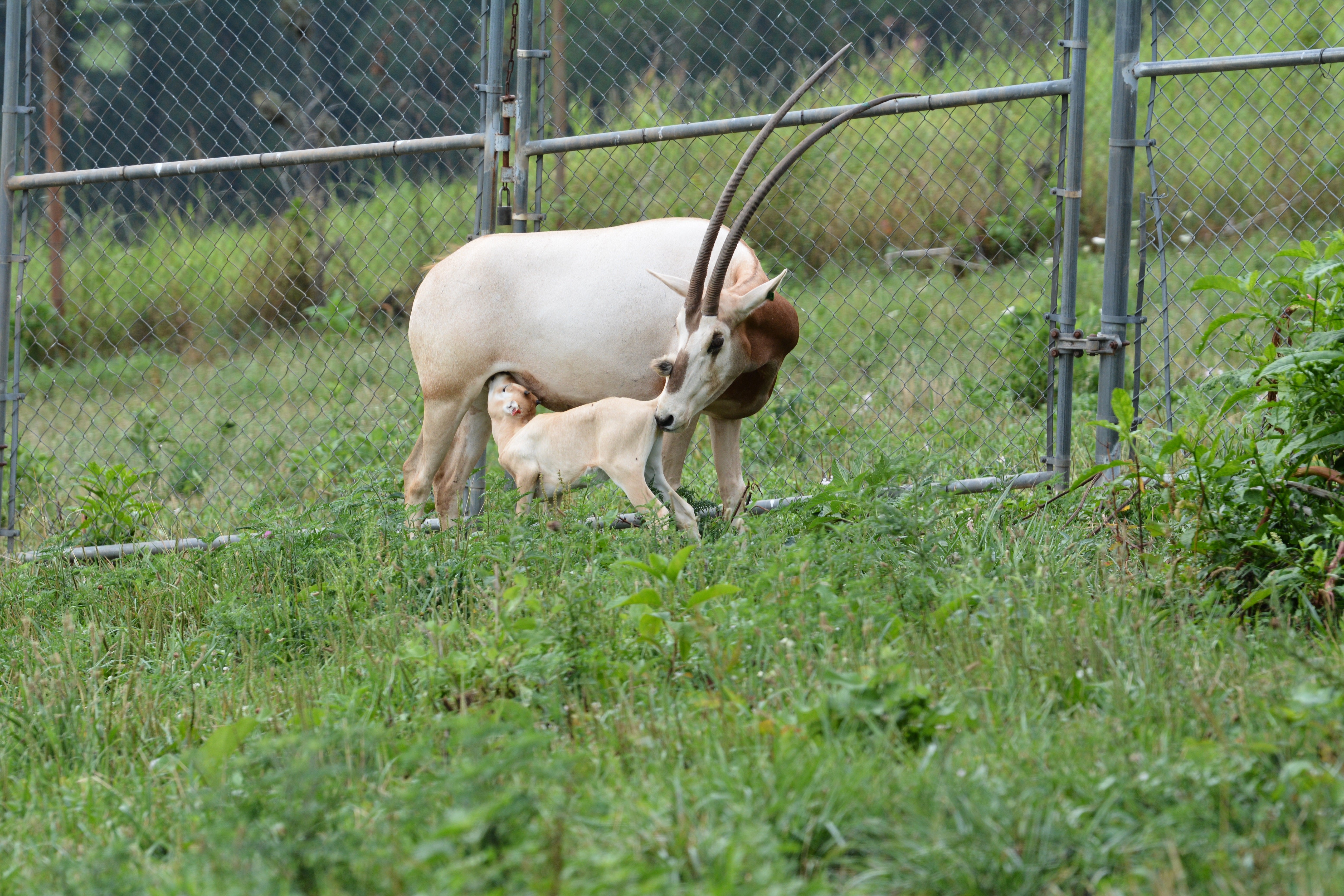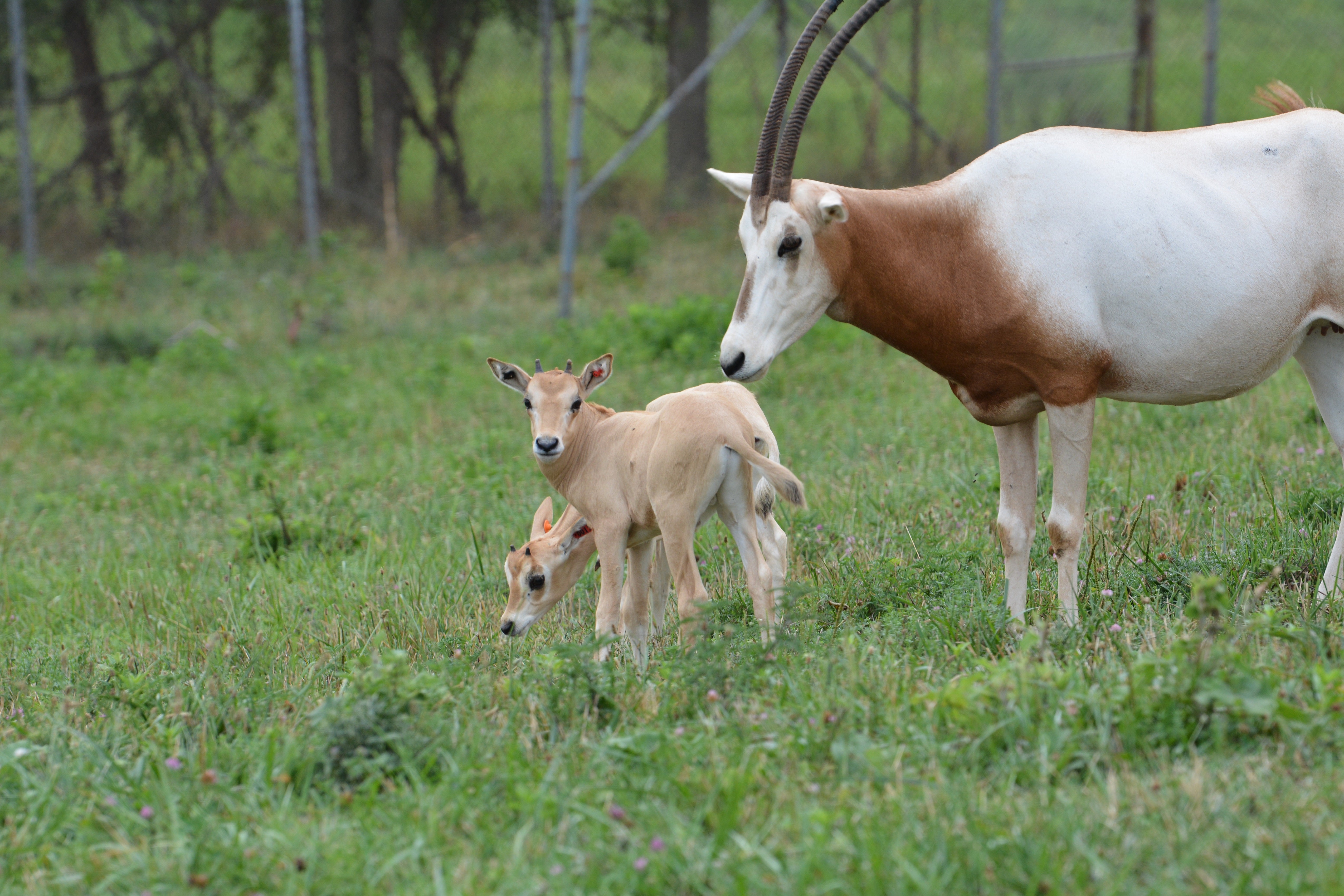Two Scimitar-Horned Oryx Calves Born as Result of Artificial Insemination at Smithsonian Conservation Biology Institute
Application of Cattle Estrus Synchronization Protocol Proves Promising for Long-Term Oryx Population Management
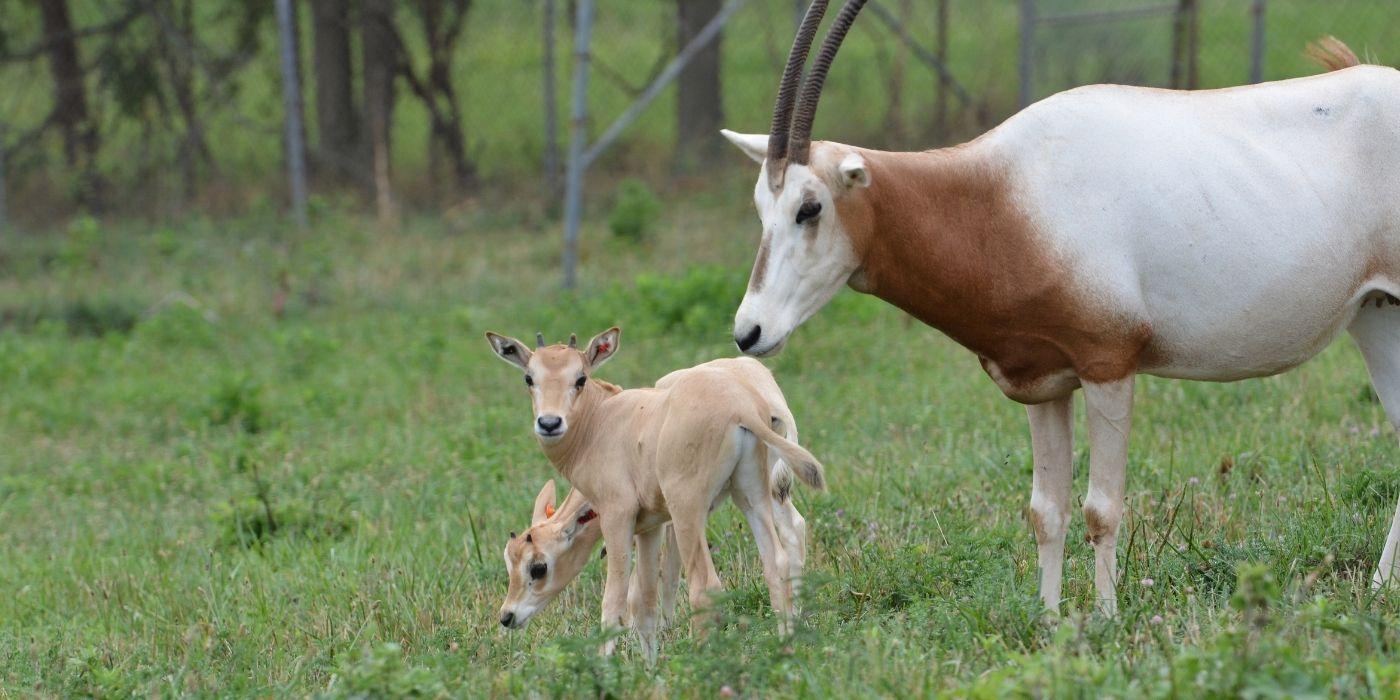
Ungulate keepers and scientists at the Smithsonian Conservation Biology Institute (SCBI) in Front Royal, Virginia, are celebrating the birth of two scimitar-horned oryx calves born via non-surgical artificial insemination. A male calf was born July 9 to 6-year-old female Esmerelda, and a female calf was born July 10 to 5-year-old female, Leanne. Both mothers and calves are doing well and bonding. As the calves grow, their vocalizations and play behavior with each other and interactions with the rest of the herd will increase.
“Assisted reproduction for rare and endangered species is constantly evolving,” said Budhan Pukazhenthi, reproductive physiologist at SCBI. “Scimitar-horned oryx have similar estrous cycles to those of cattle, so we tried a protocol developed for the artificial insemination of livestock called CO-Synch. Narrowing the insemination window helped increase the chance of conception. These births are proof positive we can apply this protocol with increased success in scimitar-horned oryx population management in zoos and for animals being prepared for reintroduction to the wild.”
Though once distributed across most of North Africa, scimitar-horned oryx are currently considered extinct in the wild due to a combination of widespread over-hunting, habitat loss and persistent drought. A reintroduction project led by the Environmental Agency–Abu Dhabi and including the Sahara Conservation Fund, the Zoological Society of London and SCBI is working collaboratively with the government of Chad and the international zoo community to return oryx to their native habitat. The first release, consisting of 23 individuals bred in human care, began in 2016. Smithsonian scientists monitor the release of every animal via satellite tracking collars. The tracking collars provide data on oryx movements and survival, as well as a means for tracking and monitoring individuals on the ground through radio telemetry.
Artificial insemination helps zoos and conservation breeding facilities with limited space maximize genetic diversity and minimize the number of animals needing to be transported, which can be costly and potentially stressful for the animal. In 2017, SCBI scientists developed an alternate protocol for inseminating scimitar-horned oryx where animal handling takes place in a hydraulic restraint device without the need for anesthesia. In June 2018, there was a successful birth using this modified approach.
The revised CO-Synch protocol included three hormone injections over nine days leading up to the non-surgical artificial inseminations in November 2020. Esmerelda and Leanne were artificially inseminated using frozen-thawed semen collected from two different male oryx ranked in the top 45 of male oryx in the Association of Zoos and Aquariums’ Species Survival Plan. The samples were originally collected 20 and 13 years ago.
SCBI plays a leading role in the Smithsonian’s global efforts to save wildlife species from extinction and train future generations of conservationists. SCBI spearheads research programs at its headquarters in Front Royal, Virginia, the Smithsonian’s National Zoo in Washington, D.C., and at field research stations and training sites worldwide. SCBI scientists tackle some of today’s most complex conservation challenges by applying and sharing what they learn about animal behavior and reproduction, ecology, genetics, migration and conservation sustainability.
# # #
Related Species:
Image Gallery
